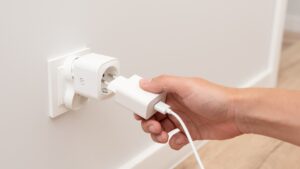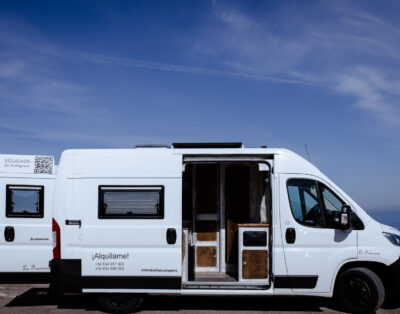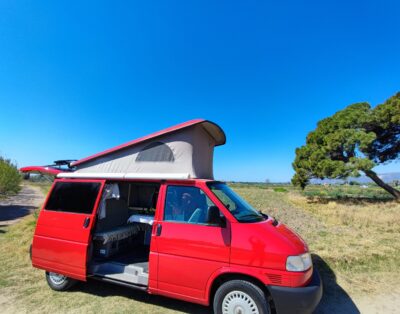What Type of Plug is Used in the Canary Islands? A Complete Guide for Travelers
Let’s get straight to the point.
You’ve just landed in Tenerife. The sun is shining, the ocean breeze is warm, and your first instinct? Plug in your phone and update your Instagram story with that jaw-dropping volcanic landscape.
But there’s a problem.
Your plug doesn’t fit.
And just like that, you realise something crucial: you should’ve checked the power sockets before packing. But don’t worry—by the time you finish reading this, you’ll know exactly what type of plug is used in the Canary Islands, whether you need an adapter, and how to avoid the common mistakes most travellers make.
Understanding the Electrical System in the Canary Islands
Let’s start with the basics.
The Canary Islands follow the European electrical system. That means the power sockets and voltage are exactly the same as in mainland Spain, France, Germany, and most of Europe.
But wait—there’s more.
Voltage and Frequency Standards in the Canary Islands
Here’s what you need to know:
- Voltage: 230V
- Frequency: 50Hz
If you’re coming from the UK or any other European country, you’re in luck. Your devices will work perfectly fine without any issues.
But if you’re travelling from the US, Canada, or Japan?
Different story.
Most American devices run on 110V, which means you might need a voltage converter to avoid frying your electronics. And let’s be honest—who wants to risk turning their expensive hair straightener into a burnt-out souvenir?
How It Compares to Other European Standards
The Canary Islands don’t have any weird, unusual plugs or voltage surprises. The setup is identical to Spain, Portugal, Italy, and most of Europe.
But let’s compare it to other regions:
- United Kingdom: Uses Type G plugs with three rectangular pins.
- USA & Canada: Uses Type A & B plugs with flat prongs and 110V.
- Australia: Uses Type I plugs with slanted prongs.
So, if you’re from the UK, the US, or anywhere outside the European Union, you will need an adapter. The good news? They’re cheap and easy to find—but more on that later.
Types of Plugs Used in the Canary Islands
Alright, let’s get to the part you’re really here for.
What exactly do Canary Islands power sockets look like?
Type C – The Classic Two-Pin Plug
This is the old-school, no-frills European plug. It has two round pins and works with most low-power devices like phone chargers, cameras, and small electronics.
If you’re staying in an older property or a budget hostel, you’ll likely see Type C sockets. They’re still functional, but not as common as they used to be.
Type F – The Most Common Modern Plug
This is the big one. The king of European plugs. The Type F plug has two round pins and two grounding clips on the sides.
Why does this matter?
Because most hotels, restaurants, and modern apartments in the Canary Islands use Type F. If you’re bringing any European appliances, this is the plug you’ll need.
Type E – Less Common but Still Found
Now, this one’s a bit rarer.
The Type E plug looks almost identical to Type F, except it has a grounding hole instead of clips. It’s still compatible with most European devices, but you’re unlikely to see it in the Canary Islands unless you’re staying in a very old building.
Plug Types Comparison: C vs. F vs. E
Let’s break it down:
| Plug Type | Description | Where You’ll Find It | Compatibility |
|---|---|---|---|
| Type C | Two round pins, no grounding | Older buildings, hostels | Works with most small devices |
| Type F | Two round pins + side grounding clips | Hotels, modern apartments | Standard for European appliances |
| Type E | Two round pins + grounding hole | Rare, old buildings | Less common but still compatible |
Bottom line? If you have a Type F plug, you’re sorted. If not, don’t worry—we’ll talk about adapters, voltage converters, and where to buy them next.
Do You Need a Travel Adapter or Voltage Converter?
So, you’ve got your campervan rental ready with AJJ Vans in Tenerife, and you’re about to hit the road. The sun’s out, your bags are packed, and you’re itching to explore the island. But hold on—before you rush off, there’s one last thing to consider: do you need a travel adapter or voltage converter for your devices?
Look, we all know the frustration of trying to charge your phone or laptop when your plug doesn’t fit, right? It’s the ultimate vacation killer. But don’t worry; by the end of this section, you’ll know exactly what to pack—and more importantly, what to leave behind.
Compatibility with UK and US Appliances
If you’re from the UK, the US, or another country with different plug standards, you’ll need to keep a few things in mind. The Canary Islands follow the European electrical system, which is fantastic if you’re coming from most of Europe. But if you’re from the UK or the US, things get a little trickier.
For UK Travelers
You’re probably already familiar with Type G plugs, which have three rectangular pins. Type F is the most common in Tenerife and the Canary Islands, and luckily, it’s compatible with your Type G plug, but only with an adapter. So yes—you’ll need an adapter.
For US and Canadian Travelers
Things are a bit different. Most US and Canadian appliances work on 110V, while the Canary Islands use 230V. This is where it gets important: if your devices are not dual voltage, you’ll need a voltage converter. Otherwise, you risk damaging your devices. So, be sure to check the voltage of your electronics before you leave. If they’re 110V, a converter is a must.
But what if your device is dual voltage? No problem! All you need is a travel adapter to fit into the European socket. But remember: voltage converters and adapters are not the same. Don’t mix them up, or your phone might just stop charging for good.
When a Voltage Converter Is Necessary
Here’s the big question: do you really need a voltage converter?
You only need a voltage converter if:
- Your device is 110V only (like most US and Canadian electronics).
- The appliance you want to use is high-powered (e.g., hairdryers, straighteners).
- It’s not dual voltage.
Without a voltage converter, your device will likely burn out or simply not turn on. And I’m sure you don’t want to risk that, right?
Pro tip: Hairdryers are notorious for being incompatible with European voltage, so if you’re travelling with one, definitely grab a converter before you leave.
Electrical Safety Tips for International Travelers
If you’re going to be using a voltage converter or adapter, here are a few safety tips to make sure you don’t end up with a fried charger or worse.
-
Check Your Device’s Compatibility
- Look at the label: Most appliances will list their voltage on the plug or near the power cord.
- Dual voltage means the device can handle both 110V and 230V, so you’ll just need an adapter.
- Single voltage means you’ll need a converter.
-
Don’t Overload Your Adapter
- If your adapter has multiple slots (for phones, laptops, etc.), don’t plug in too many devices at once. You might blow a fuse or, even worse, cause a fire.
-
Buy a Good Quality Converter
- Cheap converters might not protect your device as well, so be sure to invest in quality. Your electronics are worth it.
-
Be Careful with Hotels
- Some hotels, like those where you’ll stay while exploring Tenerife in your AJJ Vans campervan, may offer adapters for 110V devices (for shavers, etc.), but it’s not always guaranteed. Better safe than sorry—bring your own adapter.
Where to Buy Travel Adapters in the Canary Islands
You’re all set. The plane’s landed, your campervan’s waiting, and now, all you need is to get that travel adapter. But where can you actually find one? Well, you’ve got options.
Supermarkets, Hardware Stores, and Airport Shops
You’ll find travel adapters in most supermarkets, hardware stores, and even airport shops across Tenerife. They’re cheap and easy to grab, but—here’s the catch—they might not be the best quality.
At the Airport
If you’ve just landed at Tenerife South or North Airport, you’ll find plenty of shops offering basic adapters. Just be careful; the prices are often a little higher than you’d pay elsewhere. But if you’re in a rush, it’s a good option.
Supermarkets
Supermarkets like Mercadona and Carrefour carry affordable adapters, and you’ll also find small electronic stores scattered around Tenerife. Again, the quality varies, so it’s better to check reviews online before you buy.
Hardware Stores
For better-quality adapters and voltage converters, visit hardware stores like Bricomart or Leroy Merlin in Tenerife. They carry a range of electronic accessories, and you’ll be sure to find something reliable.
Should You Buy an Adapter Before Traveling?
Here’s the burning question: should you buy a travel adapter before leaving home?
In most cases, yes. Why? Because it’s easier, cheaper, and you’re less likely to forget it. Plus, if you’re renting a campervan from AJJ Vans, you can easily charge your devices on the go, without worrying about finding a shop in the middle of your adventure.
Remember: not all adapters are created equal, so if you’re picky about quality, do yourself a favour and grab one before you leave. That way, you’re covered the moment you arrive.
Travel Tips for Using Electrical Devices in the Canary Islands
Now that you know all about adapters and converters, let’s talk about how to use your electronics while exploring Tenerife—because let’s face it, you can’t live without your phone (especially when you’re capturing epic views of the island).
Hotel Provisions – Are Universal Adapters Available?
Some hotels in Tenerife might offer universal adapters upon request, but it’s not guaranteed. Hotels in the popular tourist areas, where you’re likely to stay if you’re renting a campervan, might offer a basic adapter for 110V devices like shavers, but most won’t cover everything.
If you want to stay charged up without any hassle, bring your own. You’ll thank yourself later when you’re out in the countryside or parked up on a beach with a dead phone and no adapter in sight.
Packing Checklist for Electronics and Chargers
Before you pack, take a moment to consider your tech essentials. Here’s a checklist to make sure you don’t leave anything behind:
- Travel Adapter – Type F is the one you need most.
- Voltage Converter – If you’re from the US, Canada, or anywhere else with 110V.
- Chargers – For all your devices, obviously.
- Power Bank – You’ll thank me when you’re out exploring the island and need some extra juice for your phone.
How to Charge Your Devices Abroad Without Issues
Once you’ve got your adapter and everything’s ready to go, charging your devices should be easy. Most places will have standard European outlets, so just plug in and let the magic happen. But remember:
- Don’t overload the adapter with multiple devices.
- Use a power bank in case you’re out of reach of a power source.
- If you’re in your AJJ Vans campervan, you can even charge devices directly from the van’s power system while driving around the island—perfect for a road trip!
FAQ – Common Questions About Power Plugs in the Canary Islands
What type of plugs are used in the Canary Islands?
As mentioned, Type C, F, and E plugs are used across the Canary Islands. You’ll need an adapter if you’re coming from outside Europe.
Do I need a voltage converter for US appliances?
Yes, if your appliance is not dual voltage (most US devices are not). You’ll need a voltage converter to safely use your electronics.
Where can I buy adapters in the Canary Islands?
You can find adapters at supermarkets, hardware stores, or even at the airport. Just make sure you check the quality before buying.
Can I use a universal travel adapter?
Yes! If you have a universal travel adapter, you’ll be able to use it for all your devices. Just make sure it’s compatible with European Type F plugs.
Conclusion – Be Prepared for Your Trip
And there you have it—your ultimate guide to power plugs in the Canary Islands. Whether you’re here to explore Tenerife in a campervan from AJJ Vans or just soaking up the sun, knowing the ins and outs of power adapters means you’ll stay connected and charge your devices without a hitch.
So, pack that travel adapter, check your device voltage, and get ready to enjoy your adventure—because the last thing you want is a dead phone halfway up Mount Teide!






